When I started shooting action figures, I quickly came across an existential question that I needed to solve for myself: Should I hide the joints in the figures when I post-process the photos, or should I leave them as is? I am not sure if other toy photographers ever had this debate with themselves, but I know I sure did.
There are a couple ways to think about it. On one hand, so the argument in my head went, action figures have joints. It’s part of the figure. It is true to the things in front of my camera. To remove the joints removes the charm of the toy.
On the other hand, leaving arm and leg joints is a dead giveaway that what I am shooting is a toy. It makes plain the fact that the figure I am shooting is just a representative of the character, and not the character itself.
If you follow my work you likely know where I came down on this issue, but before I reveal it here, let me say that there really isn’t a right answer to this. Hopefully that will become obvious by the time I am done here, but it really does boil down to artist’s choice. Just like there is no right answer when it comes to shooting LEGO, or action figures (or both!), natural light vs studio lights, straight from camera or heavy post-processing—it all comes down to what serves the artist’s vision best, and all artists are different.
So please don’t take this as a sermon about why my way is best (it’s really not), but rather just an exploration of the factors that led to why I do the things I do.
Joints vs no joints
I started my toy photography life shooting LEGO, which I did for years. Along the way I decided to give action figure photography a try, merely to explore a different method of shooting.
My first action figure photos clearly had the joints showing:
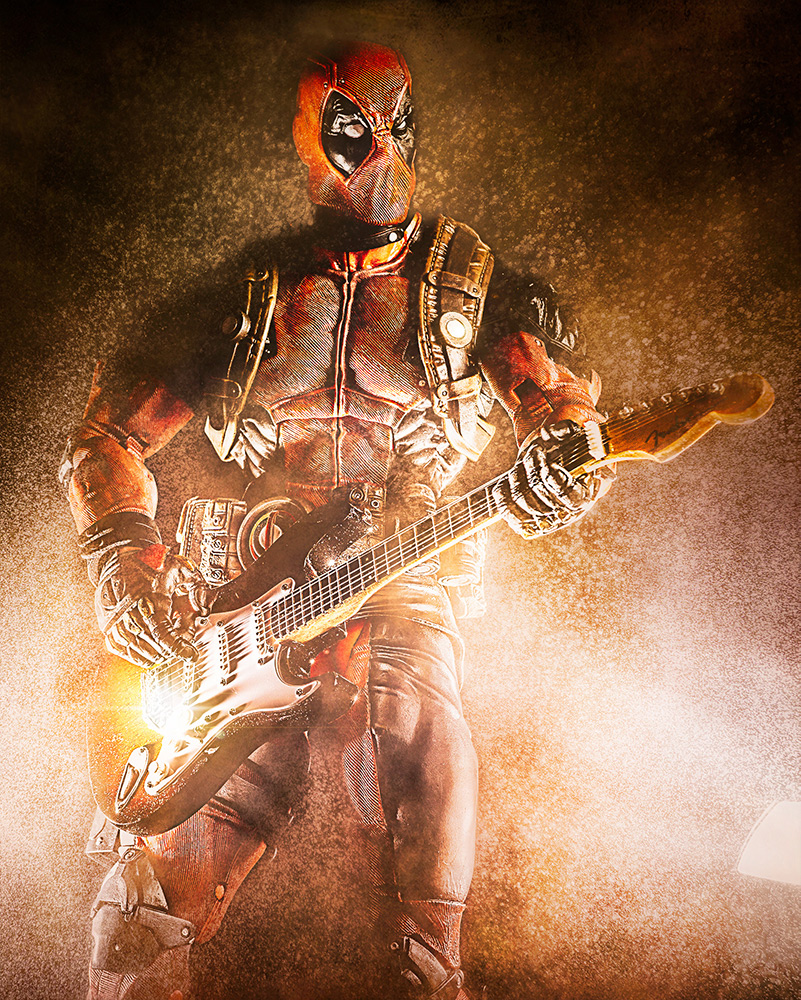
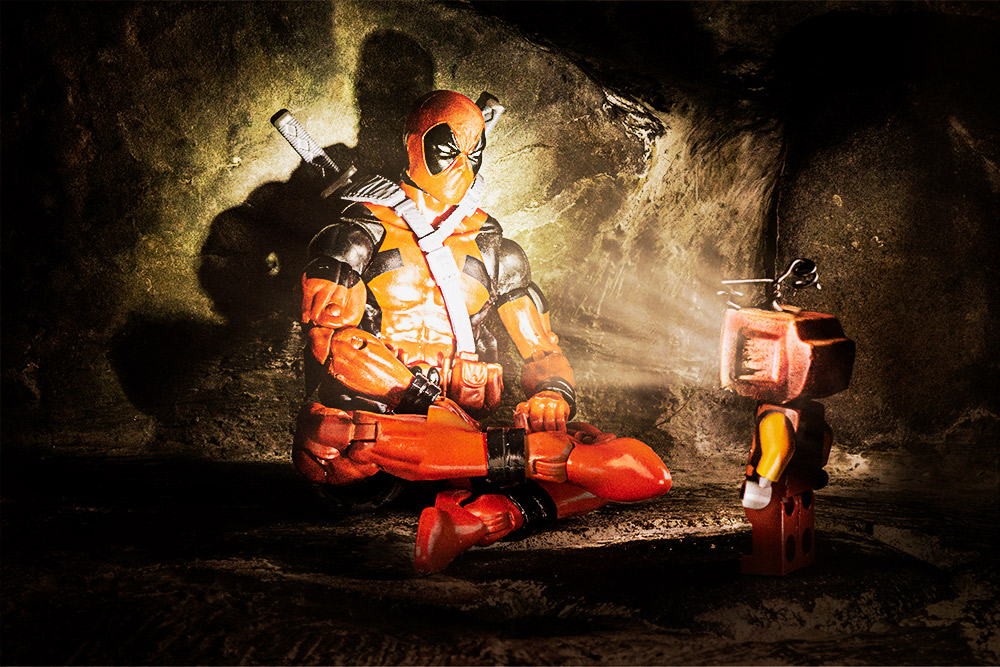
I found I was able to tell an effective story with action figures just as I could with LEGO, but those joints left me feeling uncomfortable. At first I took the stand that this was simply something I’d have put up with—action figures have joints. If I am going to shoot the ones with joints, then the result I got would have joints. Deal with it, Dave. Just, like, deal, OK?
I also am a heavy user of post-processing for my photos. I love spending hours in Photoshop tuning things just right to get the vision I see. One day, while using the spot-healing brush to get rid of some dust, I swiped it over one of the joints. It magically disappeared. Just like that, a problematic joint looked like a non-problematic elbow. It was super easy, and I loved the look.
That was it for me, I was hooked, and I have been removing the joints ever since.
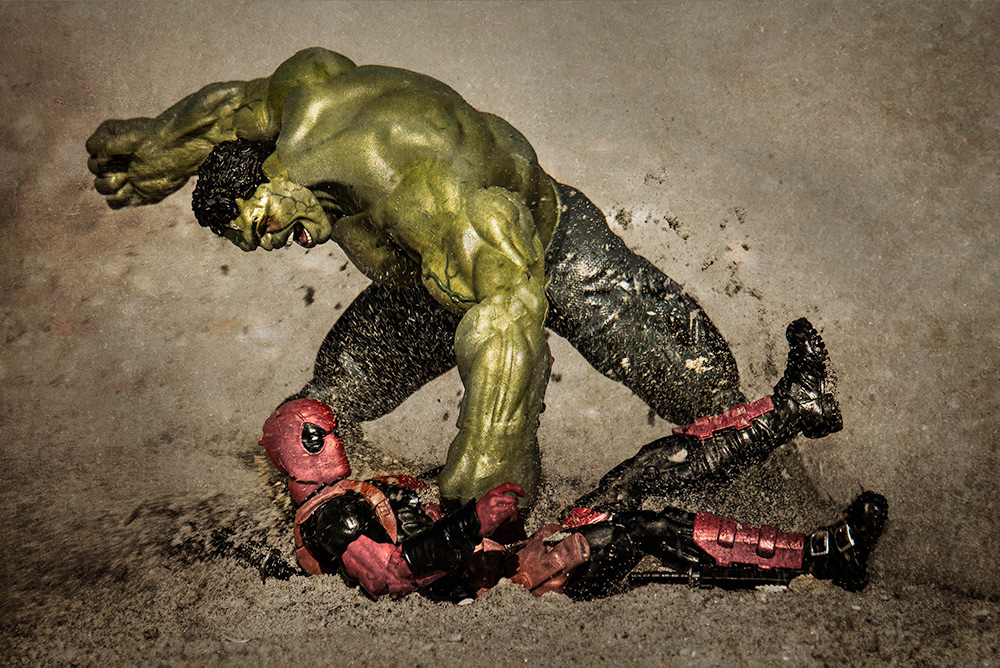
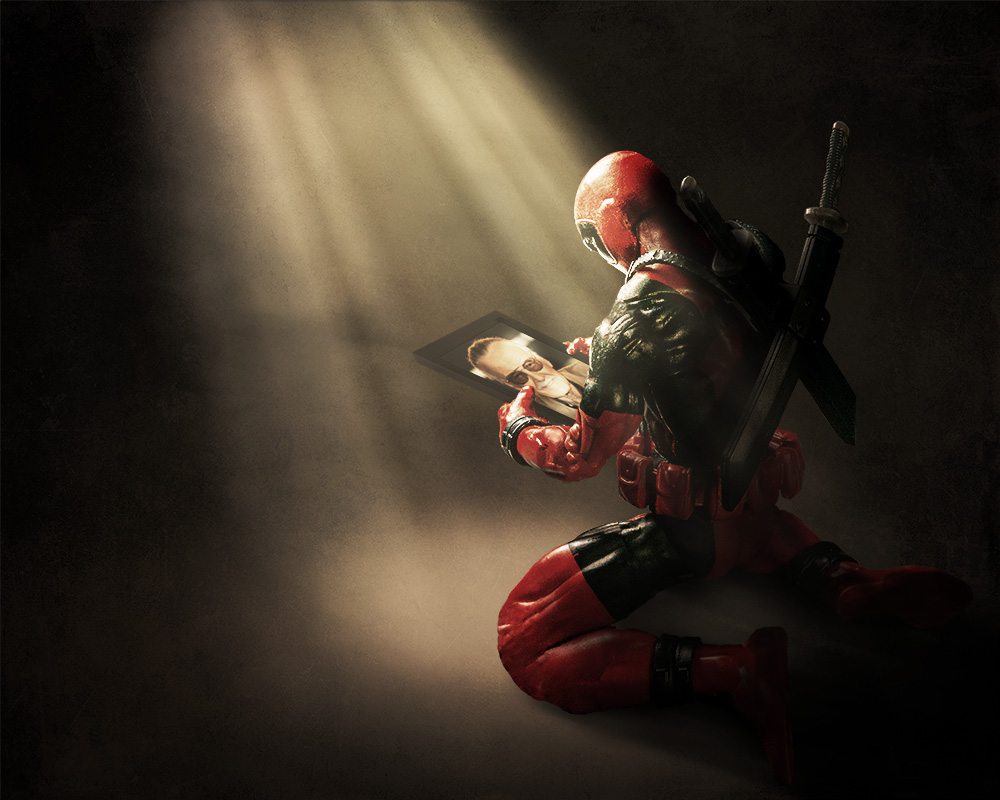
I have even gone so far as to massively prefer action figures that are designed (through clothing or other clever engineering) to hide the joints.
Still, the question remains: Why?
Figure vs character
I think for me the answer is that I am really not a toy photographer. I don’t want to shoot a toy. It’s the character the toy represents that I really want to capture.
The figures I love to shoot—Deadpool (obviously), Iron Man, stormtroopers, Teenage Mutant Ninja Turtles—are all characters I love in general. Through comics and movies, they develop their own mythos. They have their own stories, their own history, mannerisms and outlooks on life. In a very surreal way they become real in my head. So real that I want to interact with them, get them in front of my camera and tell my own stories with them.
This, obviously, isn’t going to happen. I am a poor man on a budget, and Ryan Reynolds or Robert Downey Jr. doesn’t come close to fitting into that budget. Even if I could find a way to get them to agree to a shoot, the special effects, set building and the rest are still an insurmountable constraint.
Action figures do fit into my budget, so I use them to tell my stories with those characters. I use them the same way Star Wars producers used models of the Millennium Falcon, and AT-AT walkers like the puppets used to create Jabba the Hutt, or Maz Kanata—to make worlds and tell stories with characters that feel real, despite being impossible to pull off in real life.
Following this logic, removing a figure’s joints in post-production becomes no different than adding a lightsaber glow or light rays. It’s just part of the movie magic required to bring a character to life.
I am a huge believer in movie magic, and it has become a large part of how I view my own work. Whatever it takes to get the final image, I’ll do it, regardless of how ugly the steps are in-between. Making a figure look as real as possible is my goal. As Joel Grimes puts it, “selling the fake.”
If I left the joints, in my head I am bringing the toy, not the character, to life. That can also be a wonderful thing. One of my favourite animated movies is Toy Story, which is all about toys coming to life and having adventures.
Many toy photographers do tell stories with their figures, bringing the toys to life like they did in Toy Story, and they do it well. Some of my favourite artists do exactly that, and I am so very thankful they do. It gives them a lot of freedom to tell unique and interesting stories. They often produce wonderful, whimsical work.
I’m just not one of those people, so I hide the joints.
The sudden but inevitable conclusion
I suppose hiding the joints is just a metaphor for covering up the limitations of the tools I have available. Working with plastic people isn’t the same thing as working with real people, and it comes with some downsides and imperfections. One of those imperfections is that plastic people have visible joints.
So for me toys are the means to an end, not the end itself. I shoot action figures because that is what I have to work with. They are my model shop and my casting department. They are not perfect. I need wires to hold them up, and they have obvious joints. I feel the need to remove both. Adam Savage would call it “hiding the crimes.” To me, it’s hiding the joints.
That’s how I get to spent time with the characters I love.
[dave]
Want more toy photography goodness? Subscribe to our weekly email round up so that you never miss a post. You can also listen to episodes of the podcast!



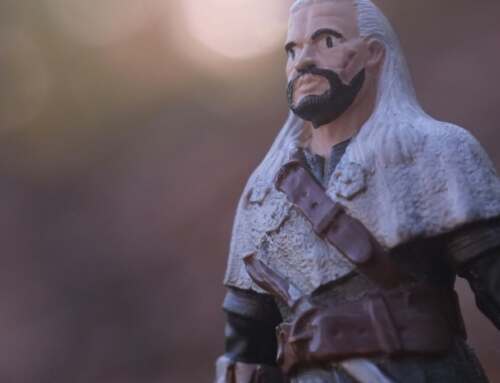
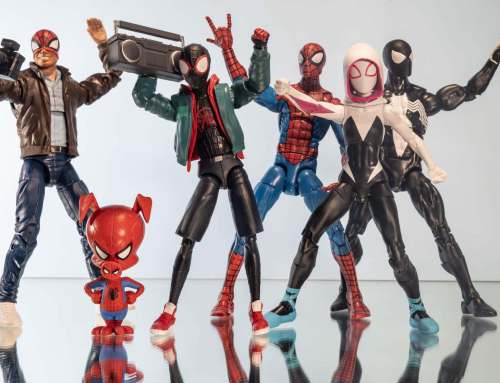
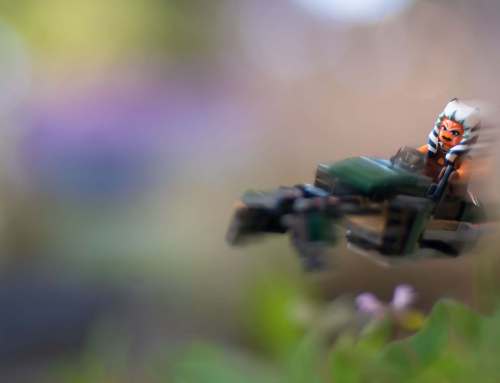
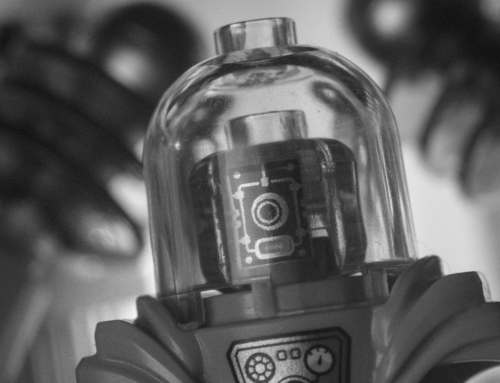
I have removed joints on… perhaps two occasions…. once recently on something i haven’t posten yet. Personally i think toys are not just a representation of a character. They are their own character and i like to shoot them as the are for the most part. I like the style, except when the photo is such that the jointiness is exaggerated and becomes distracting. I don’t find that happens often though. I remember removing and elbow joint ecause it was RIGHT in the forground center of a very simple image and the texture was just to complicated and detailed for the image. Pure distraction. Similarly more recently i did the same with the back of knees on a space suit that were front and center. The joints just looked weird in balloon like space suit… all mechanical where it was supposed to be poofy and oversized. Again, distracting to the aesthetic. There are so many ways to approach things. All situations differ.